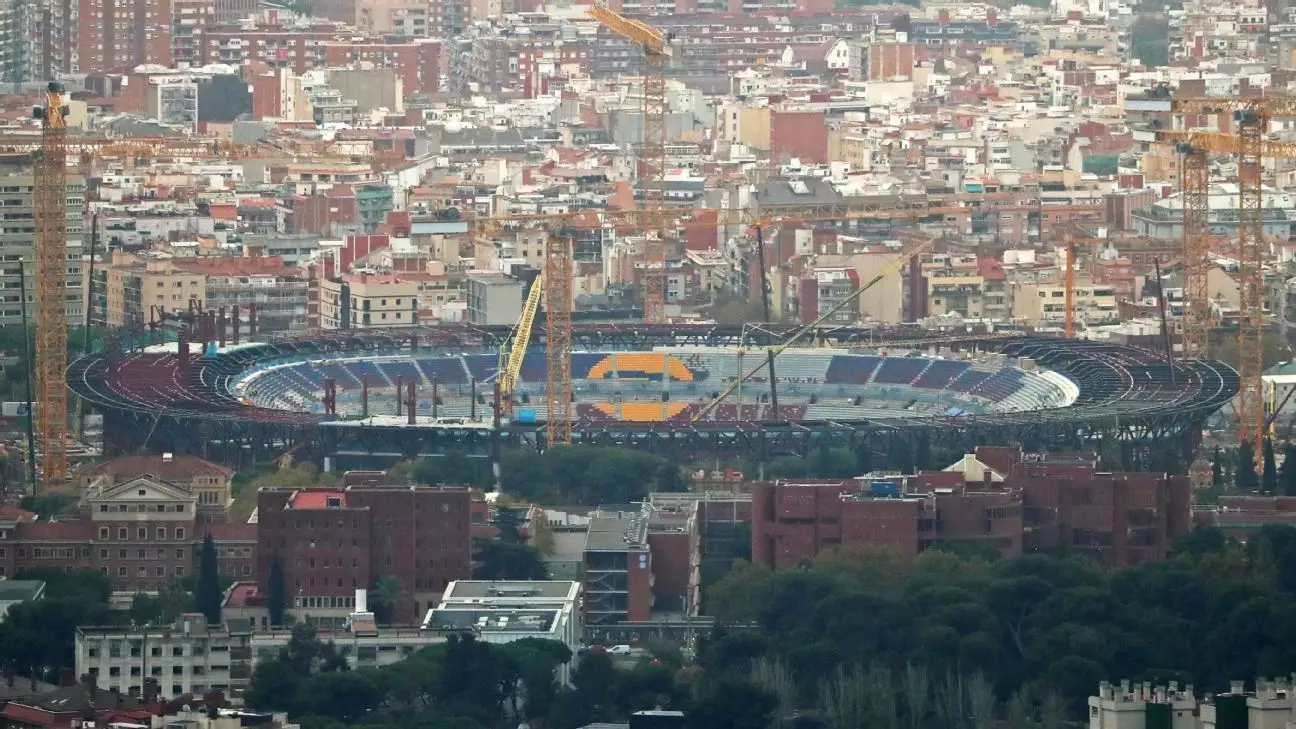Barcelona FC is currently navigating a complex web of renovations and logistics as they strive for a timely return to their iconic Camp Nou stadium. Initially, the club aimed to be back home by November to celebrate their 125th anniversary, an event steeped in tradition and significance. However, with that deadline now in the rearview mirror, hopes have shifted, and the president, Joan Laporta, recently indicated a new target date in March. This impending timeline, however, faces serious challenges, casting doubt over the feasibility of returning to their beloved ground.
Challenges to the Renovation Timeline
The redevelopment of Camp Nou has proven to be a more arduous task than anticipated. Sources reveal that unanticipated structural work is required on the stadium’s second tier, which has marred initial plans and led to delays in the overall progress. Furthermore, the installation of a new playing surface has yet to commence, as heavy machinery still occupies the pitch area. With elite football demanding a top-tier playing condition, the pitch installation process is expected to take up to three months—a fact that makes the March return increasingly questionable.
One striking aspect of the timeline challenge involves UEFA’s regulations concerning venue changes. According to Laporta, Barcelona’s strategy hinges on returning to Camp Nou before their first knockout match in the Champions League. Once a home fixture is played at a venue, UEFA rules prevent subsequent changes for that tournament. This stipulation underscores the urgency behind Barcelona’s plans. In contrast, La Liga does not impose such restrictions, leaving the club some leeway in domestic play.
Barcelona is envisioning a phased return to Camp Nou, with initial attendance figures limited to around 60,000 fans as renovations progress. The overall redevelopment aims to enhance the stadium significantly, anticipating an increase in capacity to about 105,000 by the summer of 2026—an ambitious goal that, if realized, will make it the largest stadium in Europe. However, the clock is ticking, and the club’s current temporary arrangement at the Olympic Stadium has been extended only until March. If construction delays continue, additional extensions may become necessary, raising questions about the long-term implications for Barcelona’s fan experience and revenue generation.
Barcelona is at a critical juncture in its storied history, grappling with the complexities of modernizing Camp Nou while ensuring a swift return home. With numerous hurdles yet to be overcome, the club’s ambitions hang in a precarious balance. As fans eagerly anticipate the revival of their cherished venue, uncertainty looms. Whether the March deadline materializes or further delays ensue will ultimately define Barcelona’s upcoming chapter in one of football’s most historic settings.


Leave a Reply